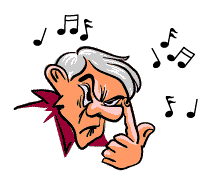After the first few practice sessions on overtones you have probably discovered that it is fairly easy to produce Overtones numbers 2 and 3 (and perhaps even Overtone 4 for the Bb and B). But for Overtones 4 and 5 you hit a brick wall.
You have arrived in front of a hurdle : a change of Register is required.
What is a register ?
A register can be defined as : "a series of tones, produced in the same way and having the same quality." (Leyerle , 1977)
Although at first glance this appears to be a very neat definition, there can be some controversy as to what "in the same way" means.
Take the saxophone mechanism for example.
 |
- One could say that :
- the saxophone has only one register, because all tones are produced in the same way (namely on the saxophone), and have the same quality (that of the saxophone sound).
- At the other extreme one may take the view that :
- each saxophone tone is a register in its own right, for each is produced differently (different fingering) and sounds different (in pitch) from the rest.
- The more common view recognises three saxophone registers :
- the low register, produced without an octave key,
the middle register, produced with an octave key, and
the upper register, produced by overblowing the middle register by means of special keys. |
(Down - Up - Top)
SAX 6.2 - Registers of the Voice